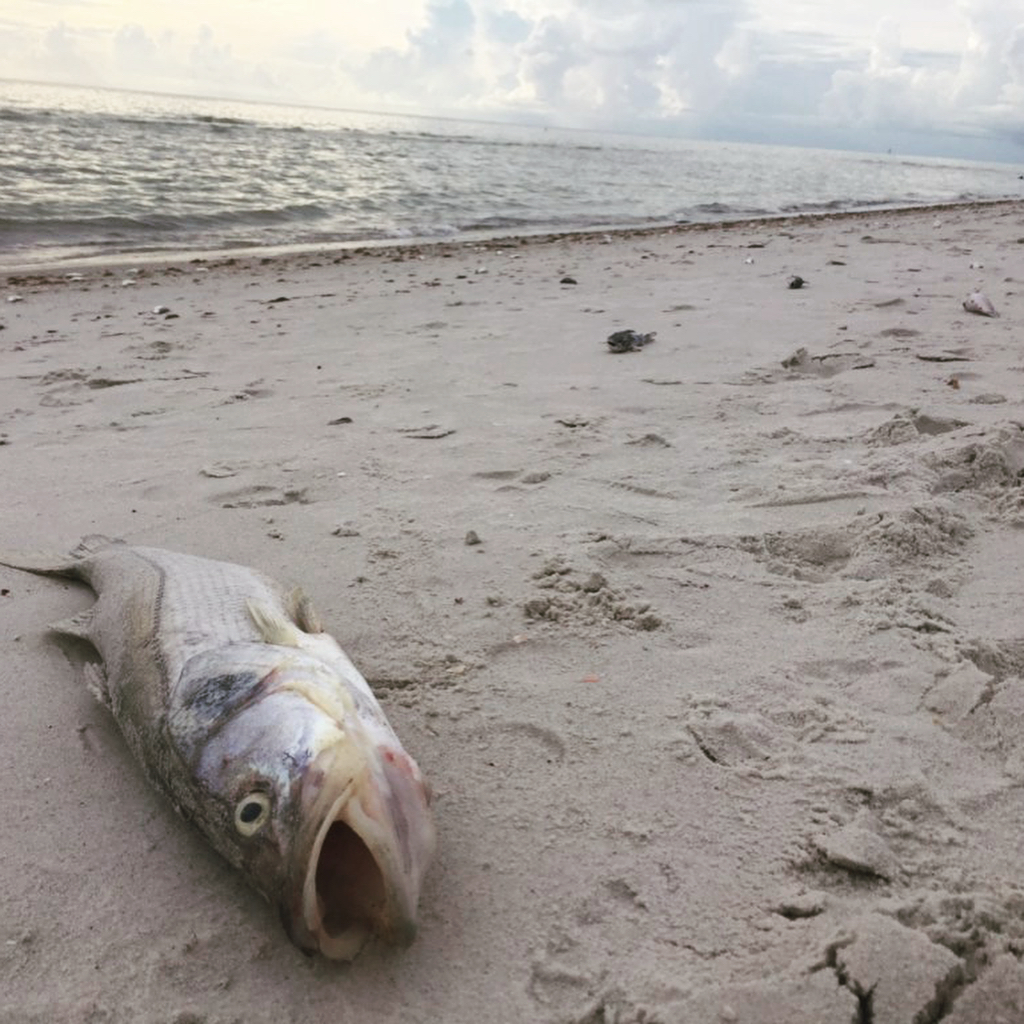Algae blooms have been occurring in Florida since the 1500s – when Ponce de León first discovered the Sunshine State. The only thing required for an algae bloom is the right water and wind currents. Normally, a season should only last from October to April. Recently, there have been algae bloom seasons that have lasted upwards of 17 months. As of August 2018, the cycle is on its 9th month and isn’t showing any sign of slowing down. Now, the coastal regions of Florida are full of dead wildlife. This includes fish, manatees, and sea turtles, plus countless others. Algae blooms decrease tourism and push locals out of their homes and businesses.
When there are 10,000 algae cells per one liter of seawater present, this is cause for environmental concern. This particular season caused up to 20 million cells per one liter of seawater: 2000 times the typical unsafe amount. A mass amount of cells caused the death of thousands of marine life, and the closure of multiple beaches including several beaches in Martin County, Florida.
Scientists believe that the worst seasons come after highly active hurricane seasons. That would connect this current season with Hurricane Irma. As well, scientists believe that algae blooms are correlated with stormwater rushing from the streets after hurricanes. Stormwater carries nutrient pollutants that affect local waterways, which are largely a combination of nitrogen and phosphorus. These are typically agricultural byproducts coming from the runoff fertilizer application used in home gardens and industrial food production as indicated by the Environmental Protection Agency.
Lake Okeechobee was once a beautiful lake that provided the Miami area with drinking water. Now it has a history of systemic algae blooms. This year the lake experienced algae blooms that covered 90% of the 730-square-mile lake. Significantly, this issue began in 1931. A man named Charles Stewart Mott founded US Sugar by draining a marsh near Lake Okeechobee for use in sugar cane production. At the time, the land wasn’t suitable for growing crops, thus a mixture of nitrogen and phosphorus was used to make the perfect land for the sugar industry.
The pollution from sugar cane farming caused marshes and Lake Okeechobee to begin producing algae blooms. Water drains from Lake Okeechobee into other water bodies when rainfall is heavy. This connects pollution to the aqueous landscape of Florida. Even though the governor’s office stated that Lake Okeechobee is the root cause of the coastal algae bloom, many environmental scientists state that it is a very complex situation. Due to various causes of algae blooms there is no one solution. Scientists agree that high phosphorus levels in the ocean are caused by the spill off of the nutrient pollution coming from the sugarcane crops.
Florida isn’t the only place that experiences harmful algae blooms. According to the National Oceanic and Atmospheric Administration, many places are affected by hypoxic zones. Hypoxic zones are areas with very low oxygen concentration that causes animal life to suffocate. The largest of these zones form in the Gulf of Mexico, below Louisiana, because the Mississippi River flows into the Gulf. The Mississippi is polluted with tons of fertilizer due to the mass amounts of farmlands along the river. This has become problematic over the past 15 years. Rainfall pushes excess fertilizer into the Mississippi River.
Similarly, the Great Lakes experienced its share of algae blooms. This includes 2014 when nearly 500,000 folks from Ohio were without clean water due to contamination. The Clean Water Act of the 70s pushed for major water reclamation projects in the Great Lakes. These projects have since cleaned up the drinking water and now the ecosystems are flourishing. Additionally, the tourism in the area has increased. The clean water is aesthetically pleasing and accessible to outdoor sporting activities. Perhaps the ecosystems and tourism of Florida would benefit financially from a water reclamation project of these kinds.
Though there are many factors that cause harmful algae blooms, there are some steps one can take at home to ensure they aren’t part of the problem.
Indeed, algae blooms are a natural occurrence and regardless of steps taken they will still occur in Florida. Yet these steps and joining the fight against climate change can impact how long and harmful these algae bloom seasons are.

Photo of dead marine life on a Florida coast by Elise DeCuba
Resources:
https://oceanservice.noaa.gov/hazards/hab/
https://www.bullsugar.org/red_tide_by_jerry_kustich
https://www.epa.gov/nutrientpollution/sources-and-solutions
https://oceanservice.noaa.gov/facts/deadzone.html
https://www.smithsonianmag.com/smart-news/toxic-algal-bloom-spreading-floridas-waterways-180969586/








